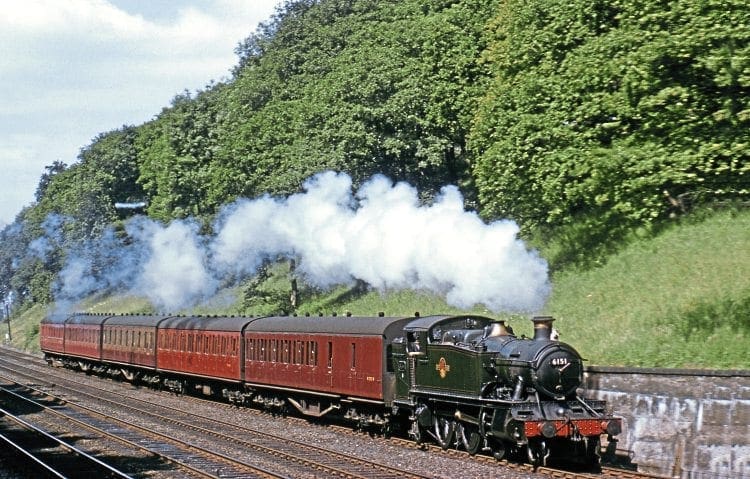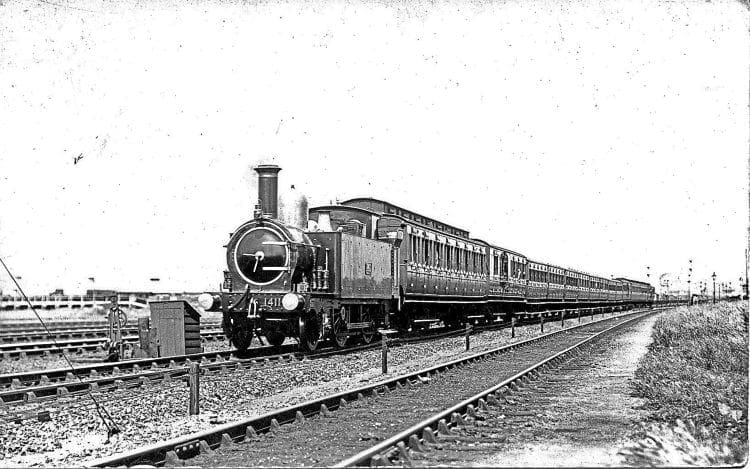Rail services in the Thames Valley in the past 60 years have undergone radical transformation from steam, to diesel, electric and also bi-mode. In the first of a two-part feature, Keith Farr reviews steam performances leading up to the introduction of DMUs.
Mention ‘Thames Valley’ to Great Western enthusiasts and their thoughts focus on Brunel’s main line between Maidenhead and Didcot, with its branches to Marlow, Henley and Wallingford. Not for them the ‘tramways’ that serve Hampton Court, Richmond and Shepperton!
More than a century ago, the GWR had foreseen the benefits of a ‘Crossrail’ by running through services to destinations other than Paddington. There were years when you could travel by through train from Windsor to Victoria via the West London line, from Greenford to Willesden via Acton Wells, or from Uxbridge to Aldgate via West Drayton and Bishop’s Road, renamed Paddington (Suburban) on its rebuilding in 1933.

Until November 1906, when the Hammersmith & City Line was electrified, a Great Western ‘Metropolitan’ 2-4-0T with condensing apparatus would have taken the train through to the city. From that date, the GWR steam loco of a city-bound train would be exchanged for a Metropolitan Railway electric one at Bishop’s Road.
Monthly Subscription: Enjoy more Railway Magazine reading each month with free delivery to you door, and access to over 100 years in the archive, all for just £5.35 per month.
Click here to subscribe & save
Through working from the GWR continued until 1939, although a freight version remained into the 1950s when a condensing pannier tank would surprise Circle Line passengers at, say, Euston Square by suddenly emerging from the tunnel and lumbering smokily through with goods for Smithfield.
The Class 455 ‘Metro’ 2-4-0 side-tanks were of Armstrong design, weighing between 33 and 48 tons, depending on type. Those penetrating the cut-and-cover route east of Paddington were generally cab-less, presumably to keep footplate conditions at a moderate temperature. As well as condensing apparatus, they were equipped with ‘trip-cocks’ for operating the Underground signalling safety system, which automatically applied the brakes if a signal were passed at ‘danger’.

On electrification, most of the condensing ‘Metros’ had their trip-cocks removed and were sent elsewhere; the six remaining, with some 0-6-0Ts fitted with condensing apparatus, were retained for working the daily Smithfield goods. And, from late 1933, standard pannier tanks Nos. 9700-10, built with condensers, became available for the Smithfield duty and some passenger workings. On locos with GWR automatic train control (ATC), the ramp contact shoe would automatically be raised before reaching the electrified section of line from Subway Junction to avoid fouling the centre rail.
The migrating ‘Metros’, meanwhile, continued to put in good work all over the Great Western, emigrating to such distant outposts as Truro and Croes Newydd (Wrexham); the last one, No. 3588, was not taken out of service until 1949.
Read more and view more images in the November issue of The RM – on sale now!




